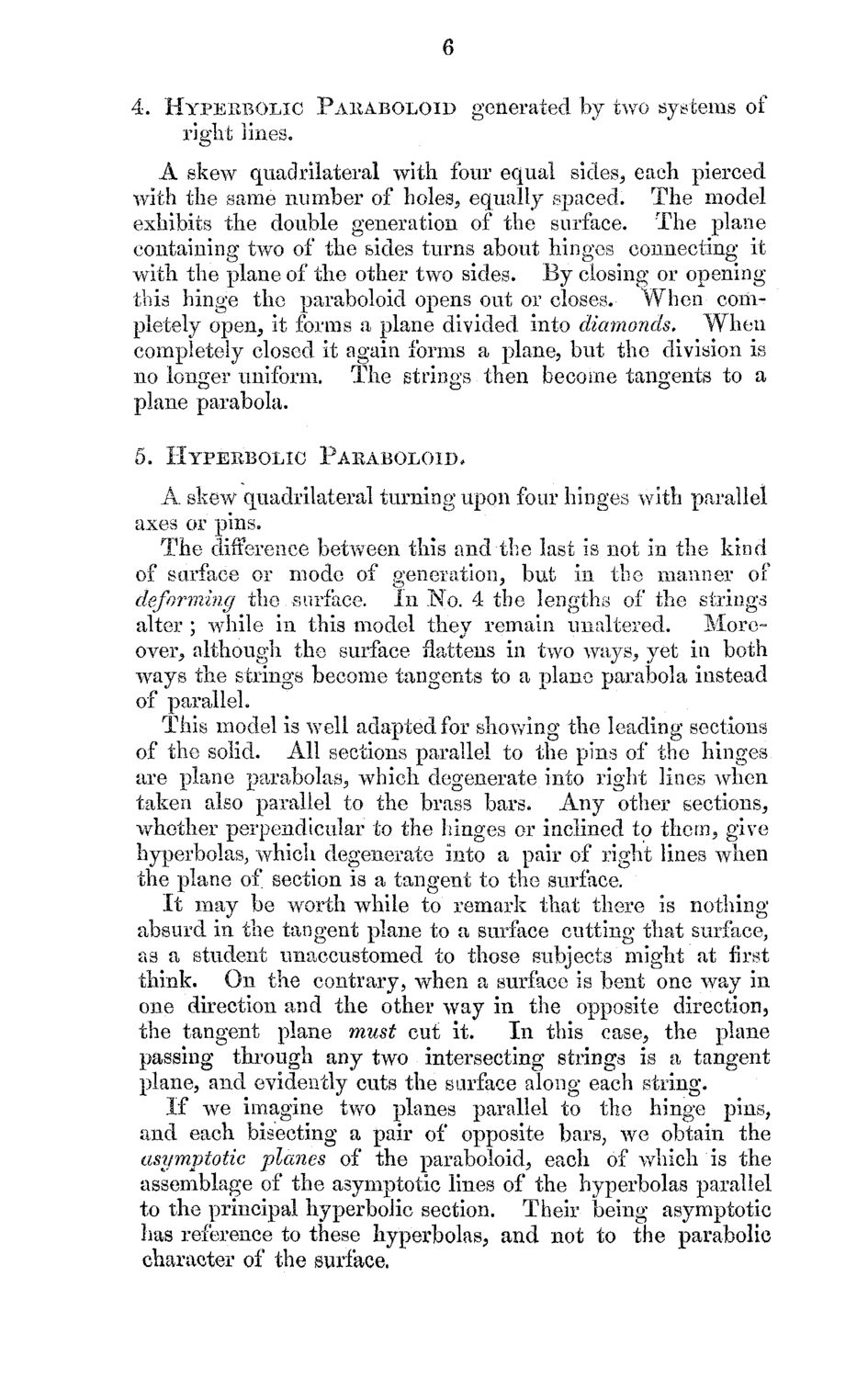| |
| |
Caption: Mathematical Models Catalog of a Collection of Models of Ruled Surfaces
This is a reduced-resolution page image for fast online browsing.

EXTRACTED TEXT FROM PAGE:
6 4. H y p e r b o l i c P a r a b o l o i d generated by two systems of right lines. A skew quadrilateral with four equal sides, each pierced with the same number of holes, equally spaced. T h e model exhibits the double generation of the surface. T h e plane containing two of the sides turns about hinges connecting it with the plane of the other two sides. B y closing or opening this hinge the paraboloid opens out or closes. W h e n completely open, it forms a plane divided into diamonds. W h e n completely closed it again forms a plane, but the division is no longer uniform. T h e strings then become tangents to a plane parabola. 5. Hyperbolic Paraboloid* A skew quadrilateral turning upon four hinges with parallel axes or pins. T h e difference between this and the last is not in the kind of surface or m o d e of generation, but in the manner of deforming the surface. In N o . 4 the lengths of the strings alter ; while in this model they remain unaltered. Moreover, although the surfaceflattensin two ways, yet in both ways the strings become tangents to a plane parabola instead of parallel. This model is well adapted for showing the leading sections of the solid. All sections parallel to the pins of the hinges are plane parabolas, which degenerate into right lines w h e n taken also parallel to the brass bars. A n y other sections, whether perpendicular to the hinges or inclined to them, give hyperbolas, which degenerate into a pair of right lines when the plane of section is a tangent to the surface. It m a y be worth while to remark that there is nothing absurd in the tangent plane to a surface cutting that surface, as a student unaccustomed to those subjects might at first think. O n the contrary, w h e n a surface is bent one way in one direction and the other w a y in the opposite direction, the tangent plane must cut it. In this case, the plane passing through any two intersecting strings is a tangent plane, and evidently cuts the surface along each string. If w e imagine two planes parallel to the hinge pins, and each bisecting a pair of opposite bars, w e obtain the asymptotic planes of the paraboloid, each of which is the assemblage of the asymptotic lines of the hyperbolas parallel to the principal hyperbolic section. Their being asymptotic •has reference to these hyperbolas, and not to the parabolic character of the surface.
| |